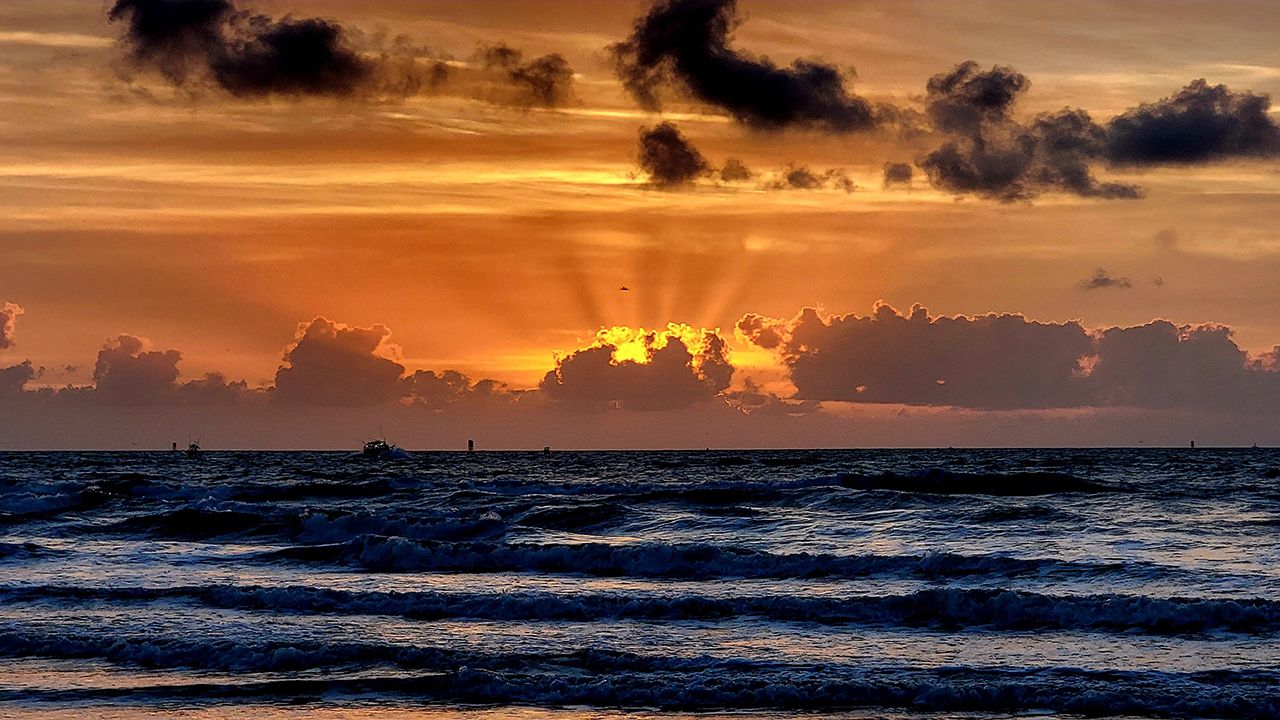Most of us have seen bright beams of light radiating from the sun around sunrise or sunset, but how do these rays form, and what makes them so unique?
Crepuscular rays, or sunbeams as they are more commonly known, are one of the atmosphere's most photogenic optical phenomena. How these beauties come to be is actually quite simple.
For perfect crepuscular ray conditions, you only need two things: the sun low on the horizon and a large object (or objects) in your line of sight between you and the sun.

Around sunrise and sunset, the sun sits near the horizon. Light radiates outward from the sun. When these rays of sun encounter an object like a cloud or tall building, that object casts a shadow as the sunbeams pass between the objects and not through them.
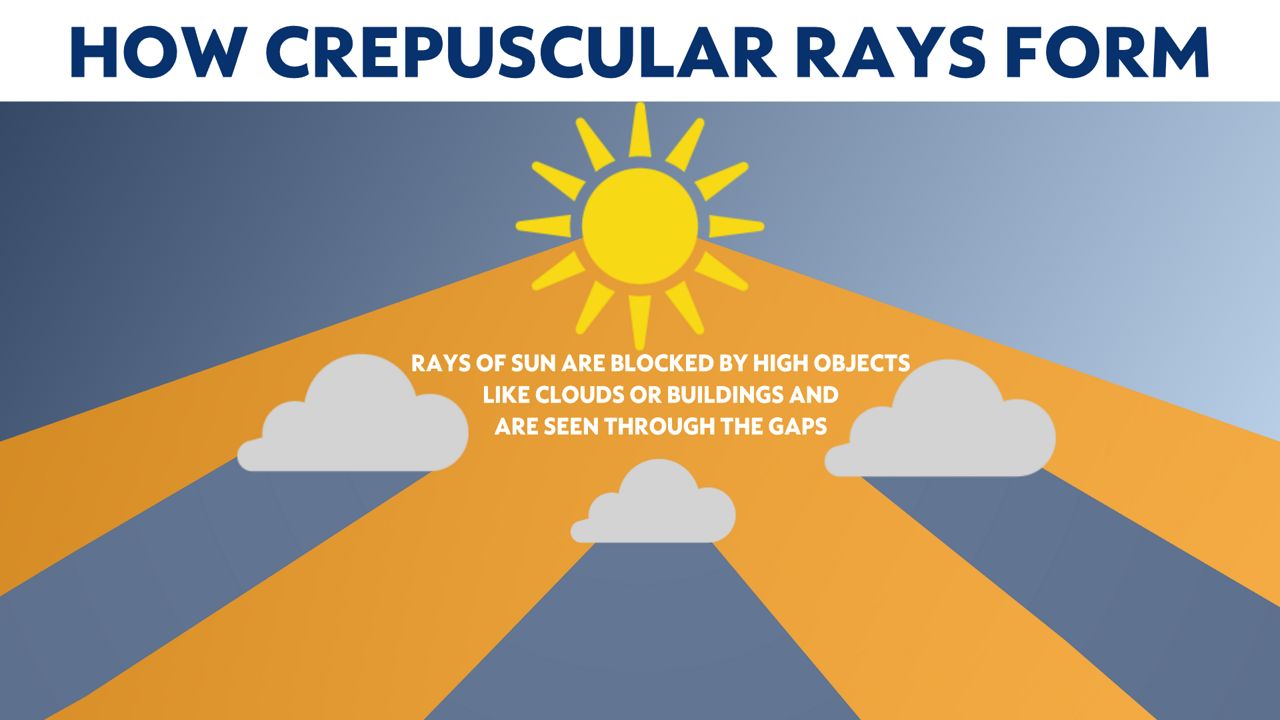
This makes the sunlight appear in bands that fan out from the center of the sun. Dust, aerosols and other small particulates in the atmosphere scatter the sunlight, sometimes giving the rays a colorful appearance.
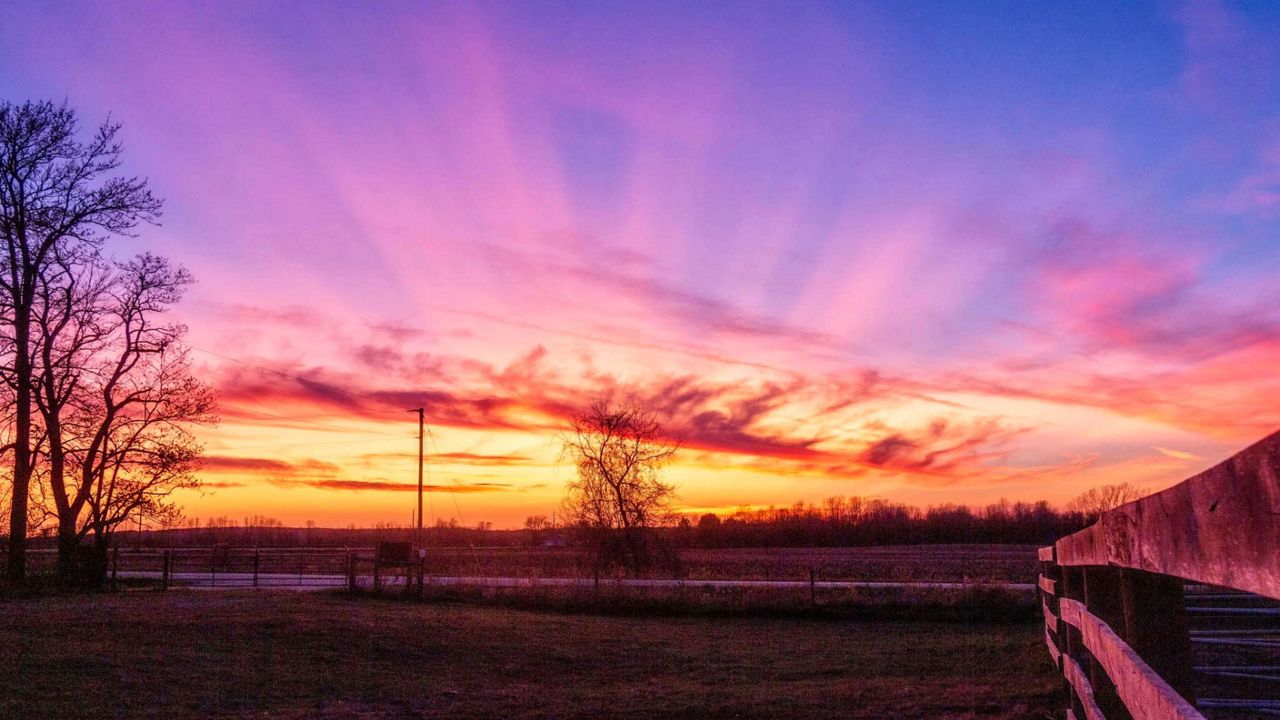
Crepuscular rays have been written about for centuries, from religious texts to mythology. In the Old Testament of the Bible, they were referred to as "Jacob's Ladder" when Jacob had a dream about a staircase to heaven. In many contexts, the rays are used to illustrate a divine presence.
Ancient Greeks believed that the rays of sunlight drew water into the sky.
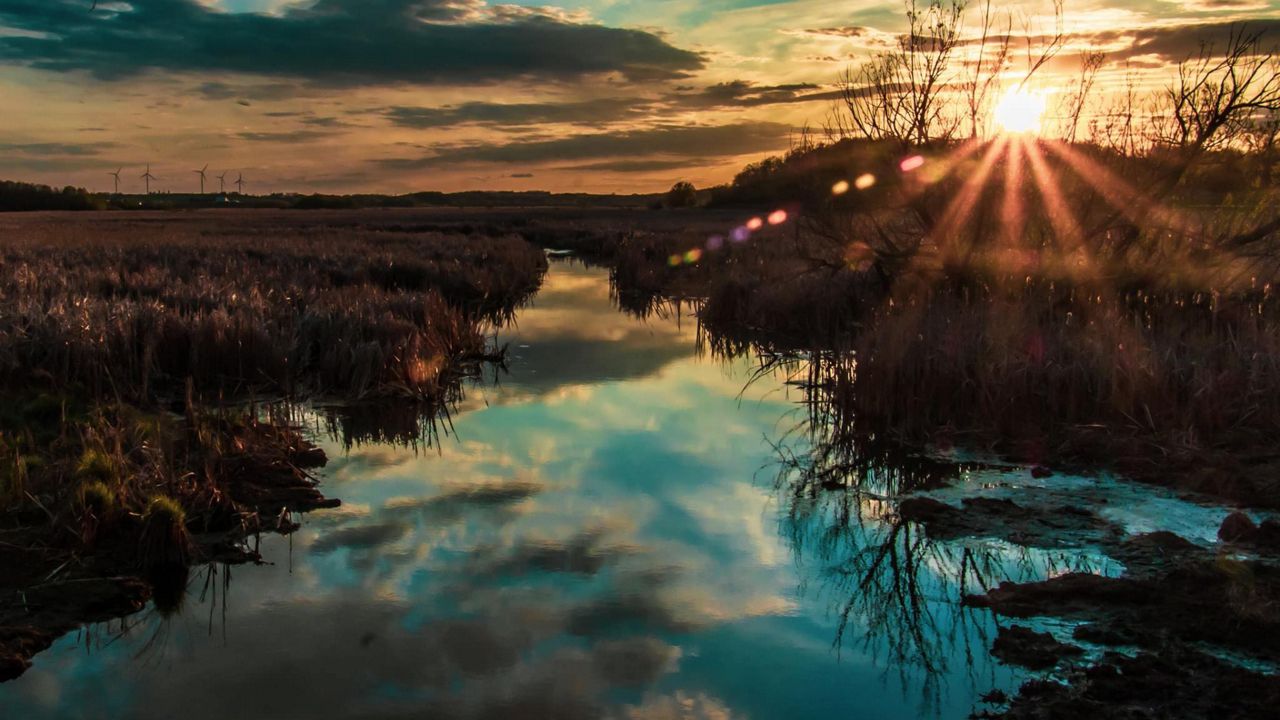
A contrast to crepuscular rays is anticrepuscular rays. They form in a similar manner but appear opposite the sun. They appear to converge at a single point, called the antisolar point, directly across from the sun. They're typically harder to spot but can also make for some gorgeous sunrises or sunsets.
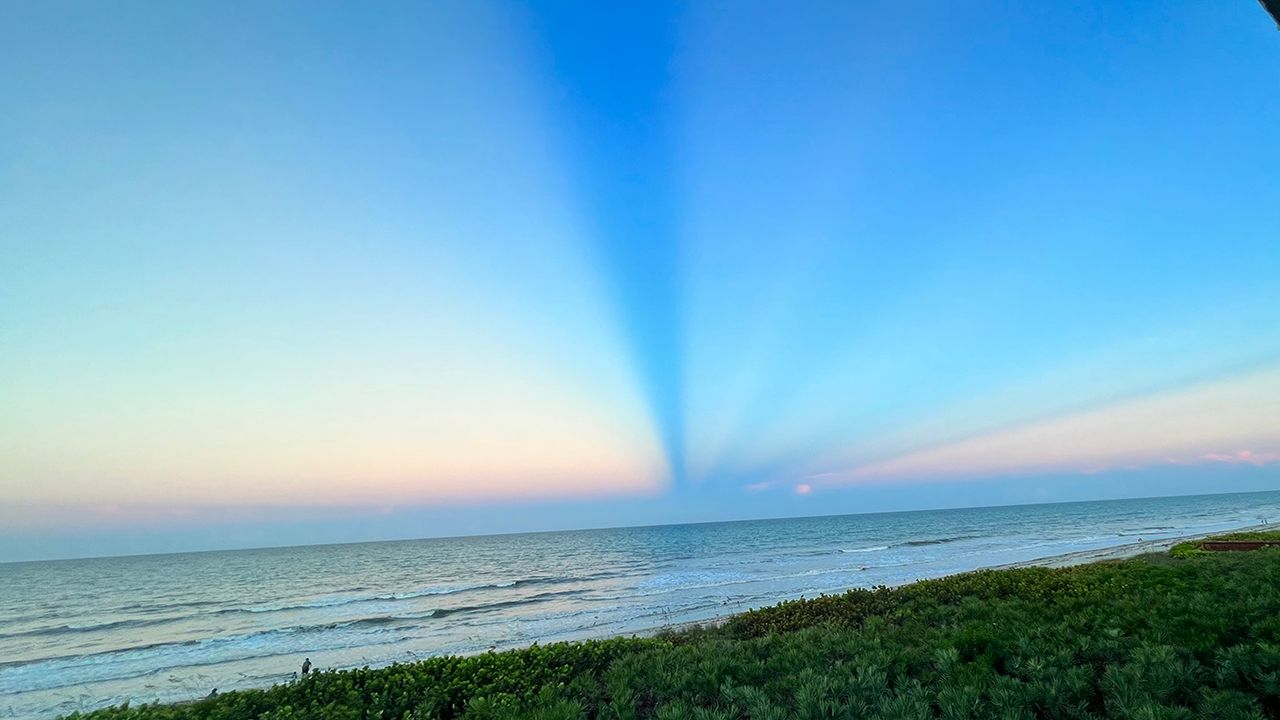
Share your photos of crepuscular rays, or any kind of weather, right here.
Our team of meteorologists dives deep into the science of weather and breaks down timely weather data and information. To view more weather and climate stories, check out our weather blogs section.



